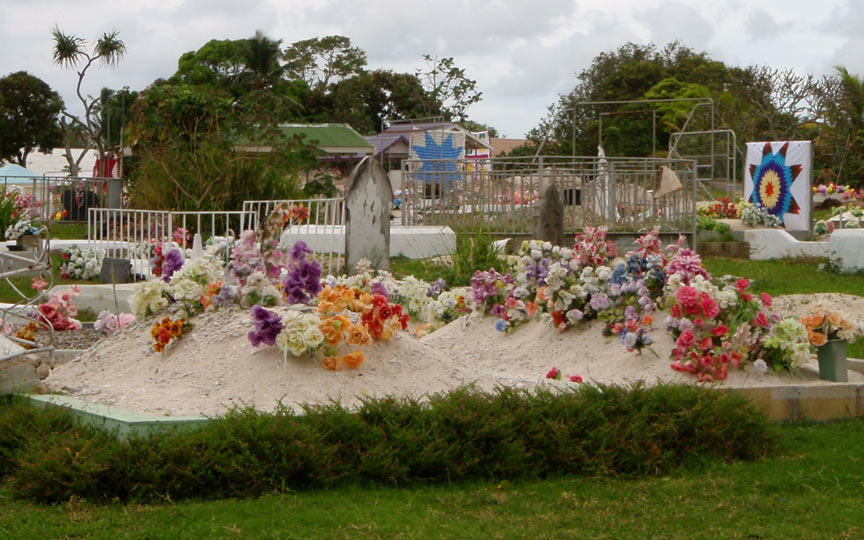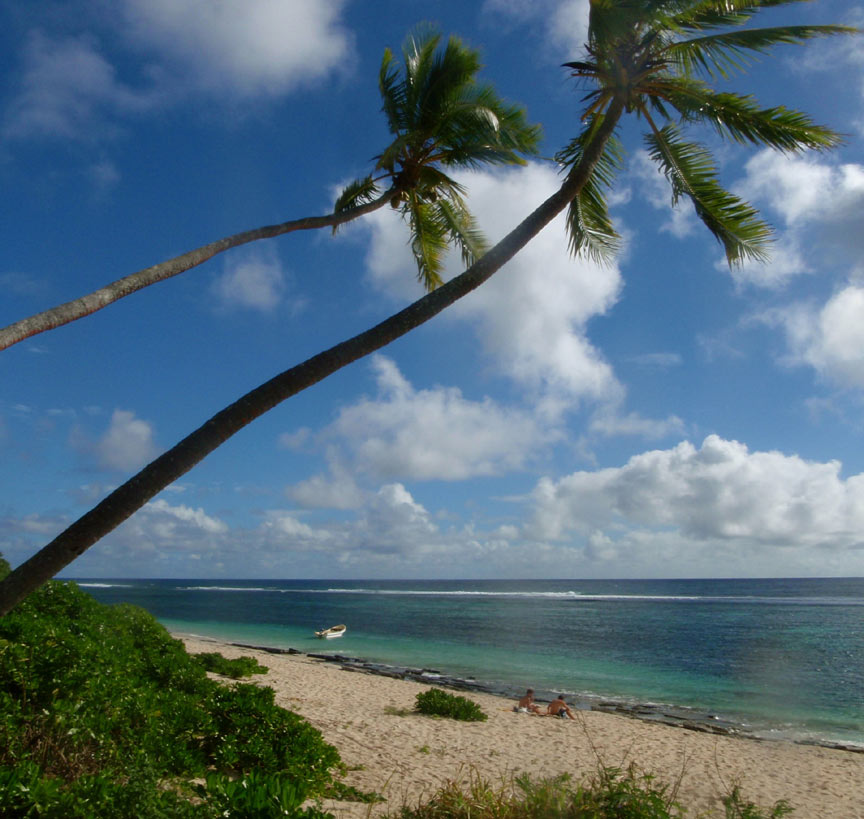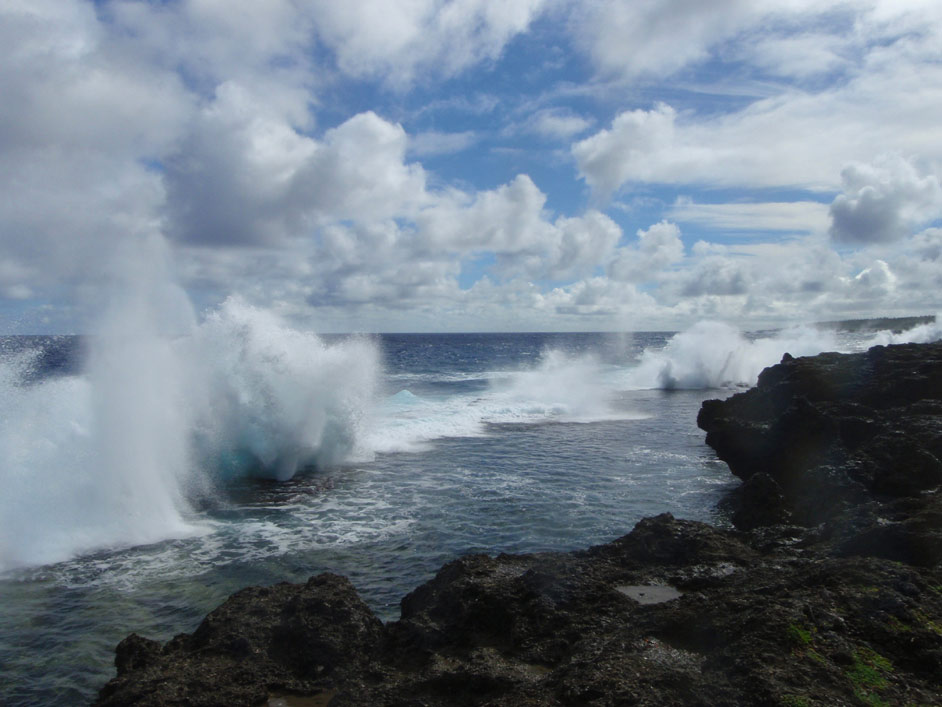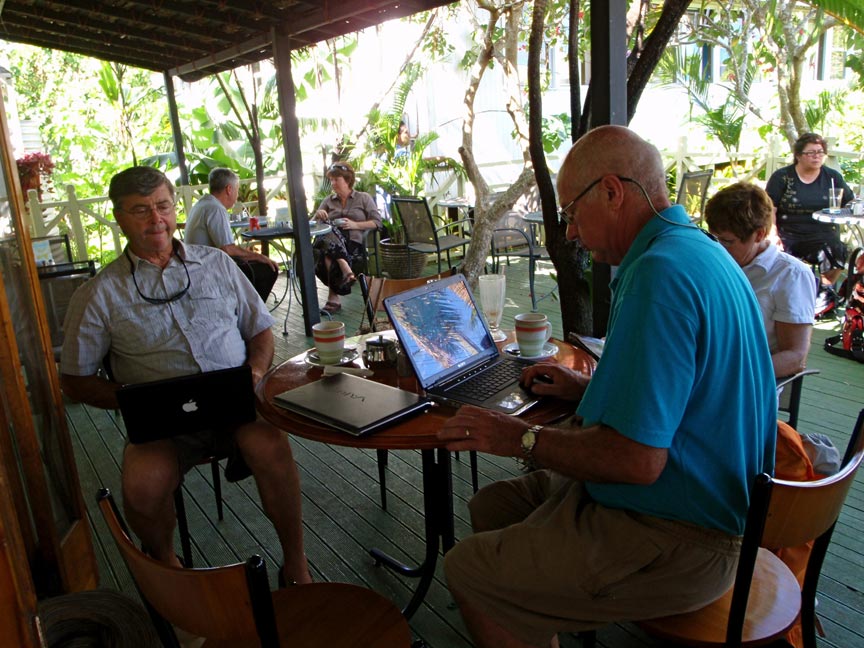A Brush with Nobility - Pangaimotu Island, Tongatapu, Tonga

Harmonie
Don and Anne Myers
Thu 4 Jun 2009 09:32
|
21:07.588S 175:09.819W
Although it's true that we were in Tonga last year,
at that time we only visited one of the four island groups that make up the
Kingdom of Tonga and we were only there for a short ten days so didn't
really have a chance to get a real feel for the place. This year we
plan to visit all four island groups and spend a total of about five weeks in
Tonga before moving on to Fiji. Below is a little bit about Tonga followed
by a summary of our tour of the 'big' island of Tongatapu.
The Kingdom of Tonga is made up of four island
groups stretching about 350 miles from the southwest to the
northeast: Tongatapu, Ha'apai, Vava'u and Niuatoputapu. In total
there are 171 coral and volcanic islands (give or take a few since new islands
appear now and then and others disappear as a result of volcanic activity), only
36 of which are inhabited. Total population is small at just over
100,000. An amazing 55% of the population is under age 25. An
additional 100,000 Tongans live overseas in places like New Zealand,
Australia and the US. The money that flows from Tongans living overseas
back to their families living here in Tonga is a huge portion of per capita
income and is what keeps many Tongan families afloat economically.
The Kingdom of Tonga became an independent state in
the mid 1970's (previous to that the UK had some influence
here) and is the only remaining Polynesian kingdom. There really is a
king - complete with royal palaces, royal family and a hierarchy of
nobles. The Tongan society is strictly based on rank, meaning the royal
family has the highest rank, followed by the nobles and then the common
people. The king and the nobles own all the land and the commoners work
the land and pay the nobles part of their harvest for the privilege. The
Tongan Kingdom is basically a feudal system. It's all
very strange to us, but it seems to work for Tonga. Although the common
people are poor by western standards, they seem to be happy, the crime rate is
extremely low and the literacy rate is 99%. Of course the other major
factor at play here is religion. The people took to Christianity in a big
way when the missionaries arrived in the 1800's and have never looked
back. We visited a small village on one of the more remote islands in the
Ha'apai group the other day and were surprised to find not one, not two, not
three, but four churches to service a village of 100 people. It's like
living in Kentucky all over again. The Mormon church is big here, as well
as Wesleyan, Catholic, and the Church of Tonga. It's not clear why the
Tongans developed such an affinity for Christianity, but some say it's because
the stories of the bible have a fair amount in common with the Tongan's old
multi-god belief system. Whatever the reason, it's clear that the churches
have contributed much to education and have probably played a large
role in the high literacy rate. At the same time, it's true that the
Tongan people have contributed much to their churches. Hopefully in the
end it all balances out for the best.
Speaking of church, on the Sunday of the big
storm, several of us took the water taxi from Pangaimotu Island to the main
town of Nuku'alofa to attend the Wesleyan church. We chose to go
because the Tongans are renowned for their singing ability, and we were
told that a church service is the best way to experience it. We
arrived before the Queen Mother (the only member of the royal family to attend
that day) who sat in a special designated area and used a special
designated doorway to enter and exit the church. The services did not
start until she arrived and no one left until after she
departed. The services were held in the Tongan language, but the singing
was good. Afterwards families congregated outside the church long
enough for this picture to be taken (picture 1). Note the
women wearing the traditional woven mats over their skirts and
dresses. The dorky looking guy in shorts and a t-shirt is one of the
boaters that attended church with us, but apparently forgot that it might
be a good idea to dress up a little.
A few days after we had all recovered from the big
storm at Pangaimotu Island, eight of us decided to take a tour around
the 'big' island of Tongatapu. Lolo, our driver, was quick
to inform us that he in fact was the second son of one of the nobles.
Because his noble father had taken off to Salt Lake City and his older
brother had done likewise to Canada, Lolo, who had attended college in Hawaii,
returned to Tonga to take care of his family's business (running the towns
they own and watching over the common people) as well as run his own tour
business. Lolo was very earnest and it was clear that he truly was
interested in making Tonga a better place. Not bad for a noble. His
taxi van did not sport any dashboard decoration though. Must be
the Hawaiian influence.
Below are photos from our Tongatapu
tour:
Picture 2 - Funerals and care of the dead
after they are buried are a big, big deal in Tonga. The cemeteries
are something to see with burial mounds topped with heaps of plastic flowers and
quilts, made specially for the purpose, hung above. When a quilt wears out
due to exposure to the elements, it is replaced by a new one crafted by the
women of the family. We've never seen a quilt used in quite
this manner before.
Picture 3 - This is the Royal Palace,
located just outside the Nuku'alofa town center. Of course the
king doesn't live here. He lives in a much more posh country estate
several miles outside of town. The Queen Mother lives in this
palace. It was built in New Zealand and transported to Tonga around
1870.
Picture 4 - This trilithon is known as the South
Pacific's Stonehenge. It was built in the early 1200's and each large
block weighs approximately 40 tons. It's purpose is unknown, but the
current king is fairly certain that it was used to determine the seasons since
on the winter solstice, the sun rises and sets in perfect alignment with the
structure. Next to the famous trilithon were stalls filled with
handicrafts for sale. Don decided he needed a carved wooden walking
stick. It's possible that he really did need it because we are pretty sure
he broke a toe when he slipped on the stairs leading down into the cabin several
days earlier. However, others suggested the walking stick might
better be used as a disciplinary tool. Unfortunately, it hasn't been
effective as such.
I didn't get a picture, but it was about here (in
between Stonehenge and the missionary beach) that we passed the Tongan minimum
security prison. We knew it was the prison because next to the road, right
outside the waist-high gates, was a wooden lean-to structure with a big sign
above the wide doorway proclaiming it to be the 'Prison Market'. 'Prison
Market?' we asked Lolo. 'Oh! Yes, yes, that's the prison market.' he
said. 'The prisoners have to provide for themselves, so they gorw their
own vegetables in the prison gardens and then sell their excess produce to the
public to make money for clothing, cigarettes and other necessities.'
Wow. What a concept. Prisoners fending for themselves with no
assistance from the government and therefore, no assistance from the
taxpayers. We all agreed that the idea of self-suficient prisoners would
play well in the UK, US, Australia and New Zealand.
'Isn't it easy for the prisoners to run away with
only a small fence between them and the outside world?' we asked
Lolo. 'They could run away' Lolo agreed, 'but where would they
go? This is a small island and everyone knows everyone. There is no
where for an escapee to hide.' We pondered this for a moment while Lolo
added, 'We also have a maximum security prison. It's located on a very
small island just off the coast of this island. Sometimes the maximum
security prisoners swim the channel to this island to get cigarettes.
After they smoke, they swim back to the prison island.' 'They swim back?',
we asked, incredulous. 'Yes, there are only about two dozen maximum
security prisoners and everyone knows who they are, so they can swim back and
forth between the islands, but they know they must always go back.' We
decided Tonga was sounding better and better the more we heard about
it.
Picture 5 - Lolo felt it was very important to take
us to the beach where the missionaries first landed on Tongatapu. This is
it. Very nice.
Pictures 6 and 7 - These are the blowholes along
the southwest shore of Tongatapu. On a good day the incoming waves
are forced up through natural vents in the coralline limestone coast and
can shoot up to 30 meters in the air. I don't think we were seeing 30
meters...but it was still impressive.
Picture 8 - We used the day after our island tour
to get ready for our departure from relative civilization. Our plan was to
leave Pangaimotu Island on Friday, May 22 and sail 65 miles north to the more
remote Ha'apai group of islands. Our preparation involved taking the water
taxi to Tongatapu and walking the mile or so to the town of Nuku-alofa where a
very nice internet cafe called 'Friends' was located. Here we had New
Zealand style flat white coffees and scones while glued to weather forecasts and
various banking sites on our computers. Don, Michael from Lady Kay and Sue
from Storyteller are doing just that in this picture. After the weather
and banking were taken care of, we stopped at the market for last minute fruit
and vegetable provisioning (always an adventure), the bakery for bread and the
'grocery store', which was more of a corner store with a few bags of potato
chips, some canned goods and thankfully for us, butter. Declaring
ourselves ready, we returned to the boat to prepare for the next
day's early morning start.
Anne
|







